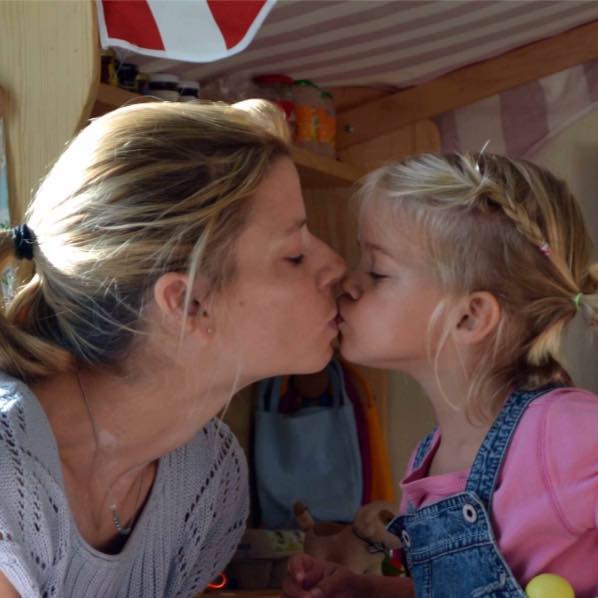
Do your kids want to wear skimpy clothes? Do you end up arguing about what they wear – or worry about shaming them?
Here’s what two parents told us recently about their own struggles:
“My precocious 11-year-old daughter wants to walk the dog down the street wearing tiny short shorts, a crop top, and lots of makeup. What do I say to her about why this isn’t OK with me, without scaring her?”
“My 12-year-old son likes to wear provocative outfits that attract very explicit sexual attention from kids at his school. I feel that this is inappropriate and don’t know what to say without shaming him.”
Unfortunately, many children are bombarded with messages that being “sexy” and “cool” gives them more value. As they get older and their bodies start to mature, they feel good wearing clothes they believe make them look more desirable.
The problem is that they don’t understand that looking and acting provocatively in public spaces, including at school, puts them more at risk of unwanted sexual attention, including catcalling, ogling, name-calling, being grabbed, and being pressured into more sexual behavior.
As adults, our job is to keep our kids safe from upsetting or dangerous situations while preparing them to take charge of their own wellbeing. This means that we have to set boundaries about wearing clothing that we think will put them more at risk.
Our job is also to be firm about our expectations – not to persuade our children to agree with us.
Parents often express fear of causing their children to “lose their innocence” by letting them know that things in our world are not always safe. As young people become more independent, we need to give them the knowledge and skills they need to stay safe.
Instead of seeing this as a loss of innocence, we can view this reality as an acceptance of change. We tell small children not to touch a hot stove because they might get burned, and not to get close to a squirrel at the park because it might bite. We don’t need to go into graphic details about burns or animal bites to tell them what the safety rules are.
In the same way, we can set boundaries with our children about what they may and may not do, without being explicit about exactly what happens in a sexual assault.
The reality is that pre-teens already know that bad things happen. They just don’t believe that it will happen to THEM! It’s also normal for young people to push against boundaries and to say things like, “But you wear makeup! So why can’t I?”
You can say, “I understand that you enjoy wearing makeup. And, it’s not OK with me because I feel it will call attention to you in ways that are inappropriate and potentially unsafe for someone your age.” Avoid the temptation to give long lectures or vivid descriptions about what could go wrong.
Suppose your child says, “You let me wear these shorts all the time! Why does it matter whether or not you’re with me?”
In a non-scary way, you can explain in a calm, matter-of-fact voice, “I understand that you like to wear your tiny shorts and it’s ok here at home or at the beach when I’m with you. I want you to wear longer shorts when you’re out in public on your own just with kids your age. Having a responsible adult with you makes it less likely that someone might say or do things that are embarrassing or even threatening.”
Suppose they say, “But you used to let me! ” You can say, “When you were younger, you were less likely to be out without an adult to help you. And, as our bodies change, our boundaries sometimes have to change.”
Suppose they say, “But it’s not fair! All my friends get to dress this way!” You can say, “Families have different boundaries, and in our family, these are the rules.”
Be prepared to persist in setting your boundaries without getting upset with them for disagreeing with you, perhaps adamantly or even rudely! Your kids have the right to their feelings, and you have the responsibility to protect them from their lack of awareness, understanding, and life experience.
Here are some options that have worked for many families in how to set boundaries about provocative or revealing clothing or behavior without shaming or scaring kids:
- Don’t buy or let your kids keep clothes or makeup that you don’t want them to wear.
- Make agreements with your kids about certain clothes that can only be worn at home.
- Define what “too skimpy” means. As one mom said to her kids, “Nothing private can show when you touch your toes or stretch up high to the ceiling. I expect you to be able to run, jump, and sit criss-cross without showing your private areas.”
In order for young people to become prepared to make choices like this for themselves, it’s important to teach them skills including how to:
- Assess safe and unsafe situations.
- Make wise choices about what to wear, depending on where they are, what types of people are likely to be around, and where they could go to get help if needed.
- Protect themselves if someone bothers them.
At Kidpower we have found that, the sooner that children learn skills in ways that are age-appropriate, emotionally safe, and effective, the safer they are.
The reality is that, when your teens are older, they are likely to make choices you don’t agree with. There comes a point where we have to let them have their own experiences. You will have much more peace of mind if you have done what you can to prepare them for what might go wrong.
As Mark Twain said, “Good judgment is the result of experience, and experience is the result of bad judgment.”
Although we can’t protect our kids from everything, we CAN give them the knowledge and skills they need to stay safe most of the time.
Additional resources:
Preparing Children for More Independence: A 5-Step Plan
Balancing Independence with Safety
How to Tell When A Child is Ready for More Freedom or New Privileges
Irene van der Zande, Executive Director & Founder
Kidpower Teenpower Fullpower International



